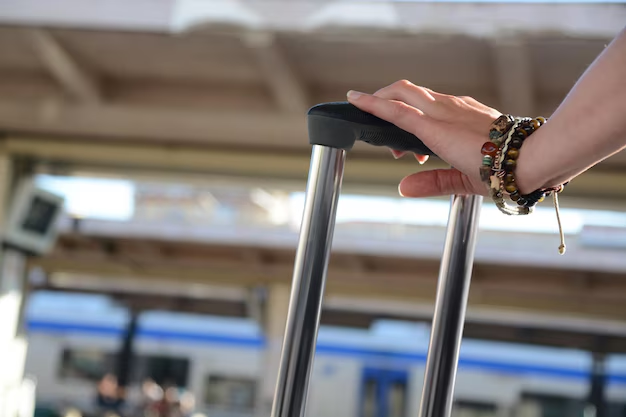Is Flying Safe After Cataract Surgery? Your Comprehensive Guide
Few experiences are as liberating as the sense of fresh, clear sight. Cataract surgery, a popular and generally safe procedure, provides that renewed vision for millions. But what about resuming daily activities, like air travel, after the surgery? Let’s delve into what you need to know about flying after cataract surgery and explore essential considerations to ensure a smooth transition to your everyday life.
Understanding Cataract Surgery
Cataracts cloud the eye’s lens, leading to blurred vision and impaired sight. Cataract surgery is a straightforward procedure where the cloudy lens is replaced with a clear artificial lens. While it's usually quick, recovery still demands certain precautions to help heal and maintain eye health effectively.
The Typical Post-Surgery Experience
Immediately following cataract surgery, patients often notice significant improvements in their vision. Nonetheless, some discomfort, such as mild itching or blurred vision, is common during recovery. Adhering to post-operative advice helps manage these effects. But how does this translate to activities like flying?
Is It Advisable to Fly Post-Surgery?
Immediate Post-Operative Recommendations
Initial Recovery Phase: It's widely encouraged to refrain from flying immediately after surgery. The initial days post-operation are essential for rest and eye protection. Flying involves altitude changes that might affect eye pressure, potentially complicating recovery.
Consulting Professionals: It's wise to communicate with your healthcare provider about upcoming travel plans post-surgery. They can provide personalized guidance tailored to your specific recovery needs.
The Role of Cabin Pressure and Altitude
Airplanes are pressurized to accommodate passengers comfortably as they ascend to high altitudes. However, this doesn't perfectly replicate ground-level conditions. As a result, there are minor fluctuations in air pressure, which could affect sensitive eyes post-surgery. This isn't a universal problem, but it's something to be mindful of, particularly in the days right after surgery.
General Guidelines for Flying Post-Surgery
Most healthcare professionals suggest waiting at least one to two weeks before boarding a flight, allowing sufficient healing time. However, this advice can vary depending on individual healing processes and any complications that might arise. Always follow specific advice given by your eye care specialist.
Essential Tips for Flying After Cataract Surgery
If air travel is necessary soon after surgery, consider the following tips to help ensure a comfortable flight:
Pre-Flight Preparation
- Schedule Wisely: Try to schedule your flight a couple of weeks post-surgery, if possible. This ensures enough healing time to address any complications.
- Doctor’s Note: Keep a note from your eye doctor stating it’s safe to fly, particularly beneficial if traveling shortly after surgery.
During the Flight
- Protect Your Eyes: Wear protective eyewear to shield from dust or direct airflow.
- Use Eye Drops: Prescribed lubricating drops can help manage dryness experienced in the cabin’s low humidity.
- Rest Your Eyes: Close your eyes when possible to reduce eye strain. Reading or using digital devices should be limited.
- Stay Hydrated: Drink plenty of water. Good hydration supports overall eye health and helps alleviate dryness.
Post-Flight Care
- Continued Use of Medications: Keep on any post-surgery medication regimen to ensure uninterrupted healing.
- Monitoring: Observe any changes or discomfort in your vision and report immediately to your healthcare provider if issues arise.
Potential Concerns When Flying After Cataract Surgery
Risks and Complications
While complications are rare, being aware of potential risks post-surgery is valuable:
- Increased Pressure on the Eye: Sudden pressure changes can exacerbate any healing eye, but major issues are uncommon.
- Infection: Airports and planes, with their high foot-traffic, introduce more chances for exposure to bacteria. Maintaining cleanliness and being cautious with contact is recommended.
- Eye Strain: The lower humidity inside cabins can lead to decreased moisture in the eye which may cause additional dryness or discomfort.
Signs to Watch For
- Prolonged Discomfort or Pain: While some discomfort is normal, sustained or severe pain should be evaluated by a healthcare provider.
- Vision Changes: Sudden shifts in vision, such as flashes or extensive blurry sight, necessitate immediate medical attention.
📝 Key Takeaways: Flight Precautions After Cataract Surgery
- ✅ Wait and Heal: Ideally, wait at least two weeks before flying for optimal recovery.
- ✅ Consult Experts: Always discuss travel plans with your surgeon or healthcare provider.
- ✅ Protect and Prepare: Use protective wear and bring necessary medication on flights.
- 🔍 Keep Watchful: Stay attuned to changes in vision or discomfort post-flight.
Related Considerations for Post-Surgery Travel
Other Modes of Transportation
While flying might be a common query, other modes of transportation, such as car rides or train travel, may also raise concerns:
- Driving After Surgery: Most people might resume driving within a week after clearance from their doctor.
- Public Transport: Riding buses or trains usually doesn't present additional issues post-surgery, though care with eye protection and hygiene remains critical.
Returning to Regular Activities
Being cautious yet informed aids in a smooth transition back to daily routines. Besides flying, address other sought-after activities with care:
- Exercise: Light activities are often safe within a week, but high-impact or water-related exercises should be avoided until cleared by your healthcare provider.
- Screen Time: Limit screen exposure during early recovery, gradually increasing as your eyes adjust.
Closing Insight: Prioritize Vision Health
Achieving clear vision post-cataract surgery is a rejuvenating experience. While eager to travel and return to regular life, prioritizing eye health with thoughtful planning and professional consultation is vital. Whether flying for business or pleasure, calculated care ensures a seamless experience with new-found clarity, opening the door to refreshed perspectives and possibilities.
